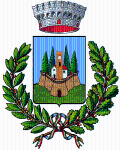Descrizione
Della storia di Luca Cava possiamo rintracciare due diverse versioni, che poco incidono sulla sostanza dell’origine di questa curiosa statuetta.
Una prima versione narra che un oste residente a San Gusmè costruì un bagno pubblico all’esterno, con tanto di scritta. Essendo però la maggior parte della popolazione analfabeta, nessuno utilizzava il bagno, così l’oste decise di collocarvi sopra una statuina di un uomo accovacciato, Luca Cava appunto, dal significato inequivocabile.
Un’altra versione vede un contadino, tale Giovanni Bonechi, che nel 1888 mise la statuina di Luca Cava nel proprio campo per invitare i viandanti ad espletarvi i propri bisogni, così da mantenere pulite le vie del borgo e concimare gratuitamente il terreno.
La statua venne distrutta dai paesani di San Gusmè, stanchi delle prese in giro da parte degli abitanti dei paesi vicini, attorno ai primi degli anni ‘40; alcune testimonianze parlano di un’azione nottetempo per gettarla nel lago interno al bosco all’inglese della vicina tenuta di Arceno.
Negli anni Settanta fu Silvio Gigli, noto regista radiofonico e televisivo, autore, uomo di spettacolo, a convincere la comunità di San Gusmè a ricostruire la statuina di Luca e a dare vita alla festa che la celebra. La statua fu costruita da Marcello Neri, artista senese della terracotta, su disegno di Emilio Giannelli, vignettista di fama nazionale. Silvio Gigli ideò la targa, posta accanto al ritratto, che così recita: Re, imperatore, papa, filosofo, poeta, contadino e operaio: l’uomo nelle sua quotidiane funzioni. Non ridete, pensate a voi stessi.
La festa del Luca deve il suo successo all’opera di promozione di Silvio Gigli, che ha contribuito ai processi di rivitalizzazione culturale di alcuni borghi castelnovini come San Felice e San Gusmè. Silvio Gigli riuscì infatti a portare nei piccoli borghi importanti uomini dello spettacolo, italiani e stranieri, dando grande impulso anche al turismo.
Il Luca è diventato quindi un personaggio di graffiante umorismo, perfettamente adeguato allo spirito della festa che si svolge in suo onore. Attualmente la festa, che come in origine si tiene a Settembre, si caratterizza per diverse attività: il mercato di prodotti locali, le esposizioni di arte con artisti locali e stranieri, gli spettacoli, la degustazione dei vini delle aziende del Chianti Classico, la messa in scena di eventi e pratiche del mondo contadino. Durante la festa del Luca si tiene un convegno a tema sostenibilità ambientale e si corre inoltre il Palio delle Botti, competizione che si svolge tra città provenienti da ogni parte d’Italia e vede impegnate coppie di atleti che spingono una botte di legno, del peso di circa 80 chili, per le vie del paese.
English version:
There are two versions of the story of Luca Cava, which have little to say about the real origin of this curious statuette.
An early version tells of how a tavern keeper living in San Gusmè built a public outdoor bathroom with a written indication of its use; but as most of the population was illiterate, no-one used the bathroom, so the fellow decided to put a statue of a squatting man on top of it - Luca Cava – with an unequivocal meaning.
In another version, in 1888 a farmer named Giovanni Bonechi put the little statue of Luca Cava in his field to invite wanderers to do their business there, so as to keep the streets of the village clean and at the same time provide free fertilizer for his land.
The statue was destroyed by the townspeople of San Gusmè, who were tired of being mocked by the residents of nearby towns, around the early 1940s; some accounts tell of a nighttime raid to throw it into the lake in the English wood of the nearby Arceno estate.
In the 1970s, Silvio Gigli, a well-known radio and television director, author and showman, convinced the community of San Gusmè to reconstruct the statuette of Luca and launch the festival that celebrates it. The statue was created by Marcello Neri, a Sienese terracotta artist, with a design by Emilio Giannelli, a nationally-known cartoonist. Silvio Gigli came up with the idea for the plaque alongside the statue, which reads: King, emperor, pope, philosopher, poet, farmer and laborer: main in his daily functions. Laugh not, think of yourselves.
The Festa del Luca owes its success to Silvio Gigli’s promotional efforts, which contributed to the cultural revitalization of a few villages around Castelnuovo, like San Felice and San Gusmè. In fact, Silvio Gigli managed to bring important Italian and foreign entertainers to these little burgs, giving a shot in the arm to tourism as well.
The Luca thus became a representative figure of a mordant wittiness, perfectly suited to the spirit of the festival that takes place in his honor. Today the festival, which has always been held in September, entails various activities: a local products market, art exhibitions with local and foreign artists, shows, tastings of wine from Chianti Classico winemakers, and the staging of events and demonstrations linked to the agricultural sphere. During the Festa del Luca, a conference on environmental sustainability is held, and the “Palio delle Botti” is run, a race in which cities from all over Italy compete with pairs of athletes rolling 80-kilogram wooden barrels through the town’s streets.
Modalità d'accesso
accesso libero
Indirizzo
Orario per il pubblico
Punti di contatto
Ultimo aggiornamento: 4 marzo 2024, 13:02

